
Welcome to the biweekly electronic newsletter from Stanford Bio-X for members of the Bio-X Corporate Forum. Please contact Dr. Hanwei Li, the Bio-X Corporate Forum Liaison if you would like to be added or removed from this distribution list, or if you have any questions about Stanford Bio-X or Stanford University.
Highlights
** On October 9, 2013, Bio-X celebrated the 10th Anniversary of the James H. Clark Center, the hub of Bio-X. Check out CLARK CENTER @ 10X as well as the Bio-X Timeline over the last 15 years!!
** Check out the article by Stanford President John Hennessy in the Nov/Dec 2013 issue of the Stanford Magazine on Bio-X and the Clark Center, "A Cauldron of Innovation".
Bio-X Core Programs
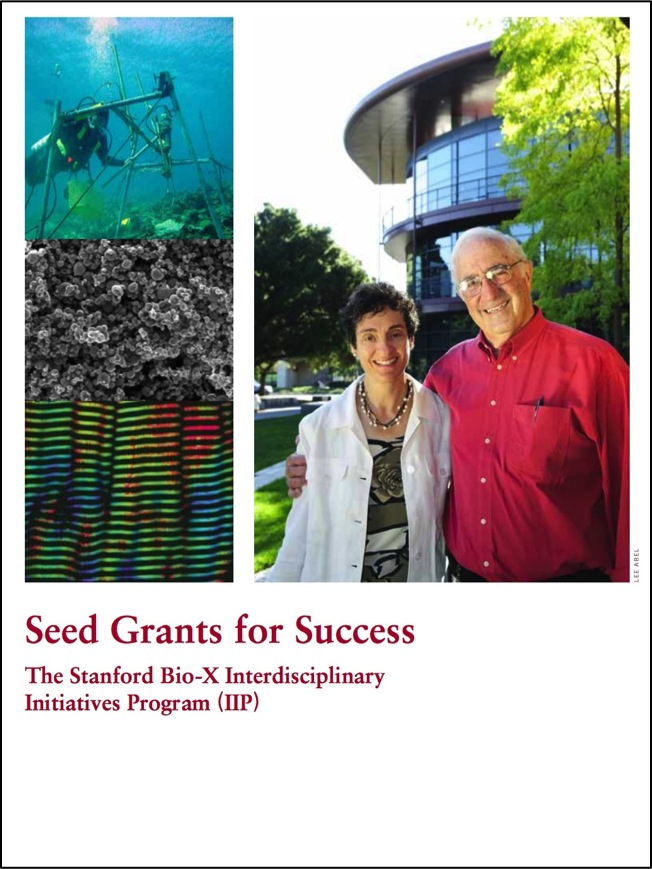 SEED GRANTS FOR SUCCESS - Stanford Bio-X Interdisciplinary Initiatives Program (IIP) SEED GRANTS FOR SUCCESS - Stanford Bio-X Interdisciplinary Initiatives Program (IIP)The Bio-X Interdisciplinary Initiatives Program represents a key Stanford Initiative to address challenges in human health. Currently, the IIP awards approximately $4 million every other year in the form of two-year grants averaging about $200,000 each. From its inception in 2000 through the beginning of the seventh round in 2014, the program has provided critical early-stage funding to 164 different interdisciplinary projects, involving collaborations from over 750 faculty members, and creating over 700 teams from six different Stanford schools. From just the first 6 rounds, the IIP awards have resulted in a 10-fold-plus return on investment, as well as hundreds of publications, dozens of patents filed, and most importantly, the acceleration of scientific discovery and innovation. 2014 is the start of the 7th round of the Bio-X IIP Seed Grants Program, and 22 newly awarded projects were selected from 142 Letters of Intent (LOIs)! This has been the largest number of LOIs that Bio-X has received. Please go here to check out the newly awarded projects. Competition was intense, and the selection criteria included innovation, high-reward, and new interdisciplinary collaborations. (To view the 142 other IIP projects that have been funded from the previous 6 rounds, please click here.) |
 Bio-X FELLOWSHIPS Bio-X FELLOWSHIPSEvery year, graduate students and postdoctoral scholars of Bio-X affiliated faculty are highly encouraged to apply for the Bio-X Fellowships, which are awarded to research projects that are interdisciplinary and utilize the technologies of different fields to solve different biological questions. Students are encouraged to work collaboratively with professors of different departments, thus creating cross-disciplinary relationships among the different Stanford schools. Our fellows have conducted exciting research, resulting in publications in high-impact journals and have been offered excellent positions in industry and academia. To date, with the 19 new awardees of 2014, Stanford Bio-X has a total of 173 Fellows. The call for 2015's PhD Fellowship program has just closed and review of the applications is beginning! You can view the numerous Fellowship projects that have been awarded over the years as well as oral presentations from previous symposiums here. |
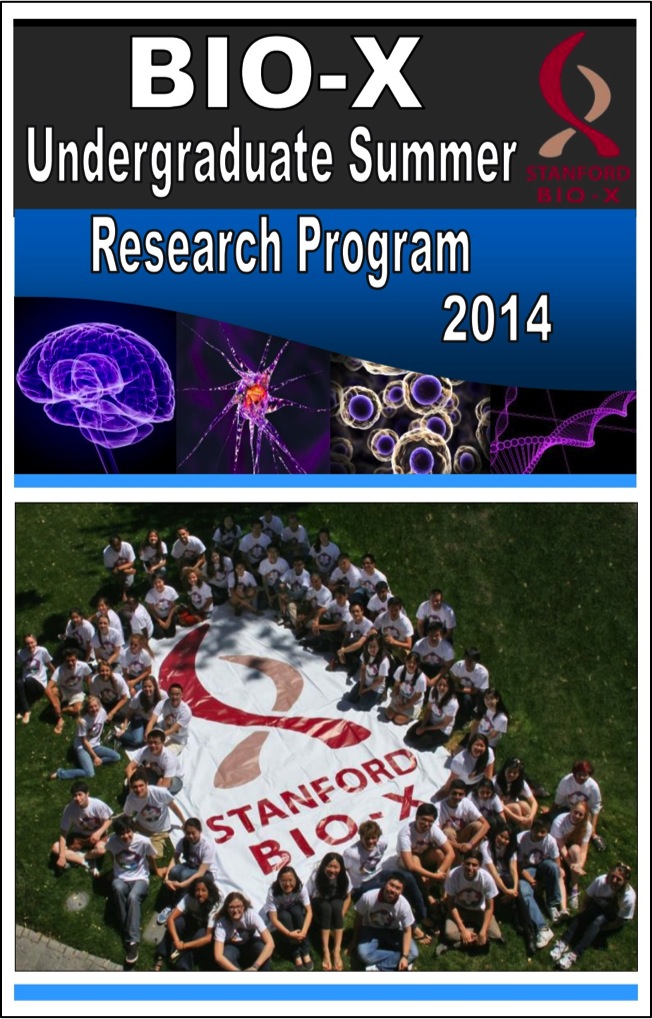 Bio-X UNDERGRADUATE SUMMER RESEARCH PROGRAM Bio-X UNDERGRADUATE SUMMER RESEARCH PROGRAMThe Bio-X Undergraduate Summer Research Program supports undergraduate research training through an award designed to support interdisciplinary undergraduate summer research projects. The program is an invaluable opportunity for students to conduct hands-on research, learn how to carry out experiments in the laboratory, and develop the skills to read and analyze scientific literature. This program is eligible to Stanford students who want to work in the labs of Bio-X affiliated faculty. To date, with 65 new awardees from 154 applications submitted this year, 306 students have been awarded the opportunity to participate in the Bio-X Undergraduate Summer Research Program. The call for 2015's USRP will be closing soon! Participating undergraduates are also required to present poster presentations on the research that they've conducted during the program. Please click here for title lists of past posters that our undergraduates have presented. |
We are cultivating and are highly successful in building meaningful collaborations with numerous corporate colleagues. New collaborations through our core programs are highly encouraged. To learn about how to get involved, please contact Dr. Hanwei Li, or Dr. Heideh Fattaey.
Bio-X also holds symposiums every year that highlight our core programs. The latest one was on February 25, 2015, where over 300 people attended Bio-X's latest Interdisciplinary Initiatives Seed Grants Program Symposium. There were 8 different oral presentations from faculty members who were awarded Bio-X Seed Grants on the progress that they have made with the funding towards their projects, as well as a packed poster session with 100+ research projects presented. Please stay tuned for future Bio-X symposiums that are coming up this year!
If you'd like to learn more about any of the projects that were presented during the entire symposium, please contact Dr. Hanwei Li with your questions.
News
 Stanford biologists show how the evolution of physical traits can influence behavior
Stanford biologists show how the evolution of physical traits can influence behavior
Bio-X Affiliated Faculty Russell Fernald
Bio-X Fellow Ryan York
For many male African cichlid fish, the best way to attract a mate is to build a really nice pit or sand castle on a lake bottom. And thus the best way to study evolution's effect on behavior might be to study why the fish build these structures, known collectively as bowers. New research by Stanford biologists reveals that multiple physical traits that arose in parallel heavily influence the fish's mating behavior of choice. The research provides a potential framework for understanding how diverse molecular and physiological evolutionary adaptations can influence a species' behavior, and is detailed in the current issue of the journal Frontiers in Ecology and Evolution. The evolution of behavior is notoriously difficult to study for a number of reasons, but the incredibly rapid speciation of cichlid fish in Lake Malawi in Africa makes them a prime candidate for investigation. More than 500 species of this family evolved in just the past 5 million years, one of the fastest rates among all vertebrates. And although these fish display a wide array of physical variation and traits, their genetic background is nearly identical, with just 0.26 percent variation across the species. "You might imagine that the genome is a big box of parts that can be put together in many different ways to produce a fish that makes a bower shaped like a castle or a pit," said Russell Fernald, a professor of biology and senior author on the study. "Evolution is a puzzle. It's complicated and selection acts on many traits simultaneously. All these species share a toolkit that they assemble in different ways." ... The researchers view this work as a proof of principle showing that modern molecular and physiology research methods and techniques could allow a greater understanding of social behaviors.
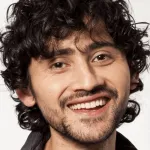 Stanford researchers solve the mystery of the dancing droplets
Stanford researchers solve the mystery of the dancing droplets
Bio-X Affiliated Faculty Manu Prakash
A puzzling observation, pursued through hundreds of experiments, has led Stanford researchers to a simple yet profound discovery: Under certain circumstances, droplets of fluid will move like performers in a dance choreographed by molecular physics. "These droplets sense one another, they move and interact, almost like living cells," said Manu Prakash, an assistant professor of bioengineering and senior author of an article published in Nature. The unexpected findings may prove useful in semiconductor manufacturing and self-cleaning solar panels, but what truly excites Prakash is that the discovery resulted from years of persistent effort to satisfy a scientific curiosity. The research began in 2009 when Nate Cira, then an undergraduate at the University of Wisconsin, was doing an unrelated experiment. In the course of that experiment Cira deposited several droplets of food coloring onto a sterilized glass slide and was astonished when they began to move. Cira replicated and studied this phenomenon alone for two years until he became a graduate student at Stanford, where he shared this curious observation with Prakash. The professor soon became hooked by the puzzle, and recruited a third member to the team: Adrien Benusiglio, a postdoctoral scholar in the Prakash Lab. Together they spent three years performing increasingly refined experiments to learn how these tiny droplets of food coloring sense one another and move. In living cells these processes of sensing and motility are known as chemotaxis. "We've discovered how droplets can exhibit behaviors akin to artificial chemotaxis," Prakash said. ... The researchers discovered how the dynamic interactions of these two molecular components enabled inanimate droplets to mimic some of the behaviors of living cells.
 Stanford researchers unravel secrets of shape-shifting bacteria
Stanford researchers unravel secrets of shape-shifting bacteria
Bio-X Affiliated Faculty KC Huang
Sixty years ago, Nobel Prize-winning scientist Joshua Lederberg first described a biological mystery. He showed how bacteria could lose the cell walls that define their shapes, potentially becoming less visible to the immune system, only to later revert back to their original form and regain their full infectious potential. Now, using time-lapse microscopy and other new techniques, Stanford bioengineering professor K.C. Huang and colleagues at Stanford and Princeton have created a forensic account detailing exactly how bacteria pull off this shape-shifting trick. The experiments they describe in Molecular Microbiology now offer a step-by-step explanation of this curious behavior, and also shed light on one of the ways bacteria may develop antibiotic resistance. Huang's team experimented with E. coli, one of the bacteria that can cause food poisoning. It's also a favorite of laboratory scientists, who have studied the organism for over 100 years. ... Huang's team created a molecular-level understanding of the process that Lederberg first observed. They used high-resolution microscopes to record time-lapse images of rod-shaped E. coli cells becoming L-form blobs and then reverting to rod-shaped again.
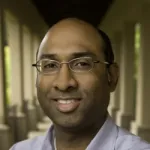 Scientists discover how to change human leukemia cells into harmless immune cells
Scientists discover how to change human leukemia cells into harmless immune cells
Bio-X Affiliated Faculty Ravi Majeti
Researchers at the Stanford University School of Medicine have discovered that when a certain aggressive leukemia is causing havoc in the body, the solution may be to force the cancer cells to grow up and behave. After a chance observation in the lab, the researchers found a method that can cause dangerous leukemia cells to mature into harmless immune cells known as macrophages. The findings are described in a paper that published online March 16 in the Proceedings of the National Academy of Sciences. B-cell acute lymphoblastic leukemia with a mutation called the Philadelphia chromosome is a particularly aggressive cancer with poor outcomes, said Ravi Majeti, MD, PhD, an assistant professor of medicine and senior author of the paper. So finding potential treatments is particularly exciting. Majeti and his colleagues made the key observation after collecting leukemia cells from a patient and trying to keep the cells alive in a culture plate. “We were throwing everything at them to help them survive,” said Majeti, who is also a member of the Stanford Cancer Institute and the Stanford Institute for Stem Cell Biology and Regenerative Medicine.
 Stanford neuroscientists find that noisy neurons are critical for learning
Stanford neuroscientists find that noisy neurons are critical for learning
Postdoctoral Scholar Tatiana Engel
Almost 20 years ago, Professor William Newsome, director of the Stanford Neurosciences Institute, stumbled on a surprising finding: Neurons in the brain have fluctuating, "noisy" signals, sometimes firing one way when faced with a certain stimuli and sometimes firing another. What's more, how that single, somewhat variable neuron fires is then reflected in an animal's decisions. Now Stanford scientists have employed computer models to reveal the reason behind these "noisy neurons": neurons that are entirely consistent can't learn. Postdoctoral scholar Tatiana Engel was first author on this work, which was published in last week's Nature Communications with colleagues from Yale, New York University and the University of Chicago. Engel said that Newsome's original discovery was a surprise in part because the area where these noisy neurons reside – roughly above and behind the ear – is not a part of the brain normally associated with thoughtful decision-making. "These cells are in the sensory system, so it's not in the cortex where we would like to think the decisions are made," said Engel, who did the work in the lab of Xiao-Jing Wang at Yale University. "This was exciting to me to realize that we are used to thinking about ourselves as agents who are in charge of our decisions and in charge of our thoughts, but the brain might be playing tricks with us." ... Engel is now working with Kwabena Boahen, a professor of bioengineering, and Tirin Moore, a professor of neurobiology, to continue unraveling the role of neuronal noise in how we learn. The two, who are both Stanford Bio-X affiliates, are neighbors in the Clark Center, where Boahen has developed a computer chip that more accurately mimics brain function and Moore does experimental work on brain function. "Coming to Stanford gave me an exceptional opportunity to collaborate closely with experimentalists and to work with very exciting datasets," Engel said.
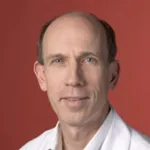
 Stanford launches smartphone app to study heart health
Stanford launches smartphone app to study heart health
Cardiology Faculty Alan Yeung
Bio-X Affiliated Faculty Michael McConnell
Bio-X Affiliated Faculty Euan Ashley
Researchers at the Stanford University School of Medicine [on March 9] launched a first-of-its-kind iPhone app as an easy-to-use research tool that will enable users to help advance the understanding of the health of the human heart. The MyHeart Counts app will collect data about physical activity and cardiac risk factors for Stanford scientists studying the prevention and treatment of heart disease. The free app uses the new ResearchKit framework announced today by Apple, which gives users a simple way to participate in the study, complete tasks and answer surveys from their iPhones. The app will deliver a comprehensive assessment of each user’s heart health and provide information on how to improve it. In the future, it will also be used to study various methods — designed to be both easy and fun — for using smartphones and other wearable devices to enhance heart-healthy habits. “We are looking for everyone who is curious as to how healthy their heart is to download this app,” said Alan Yeung, MD, the Li Ka Shing Professor of Cardiovascular Medicine at Stanford. “Users will be able to see their activity and fitness levels, and their ‘heart age.’ We’ll also be able to study what motivates people to improve their heart health.” MyHeart Counts can be downloaded beginning today from the App Store. More information about the app is available at http://myheartcounts.stanford.edu.
Events
| Institute for Immunity, Transplantation and Infection March 27, 2015, 12 pm - 1:30 pm LKSC Room 130, Stanford, CA "Immunotherapy combinations with immune checkpoint blockade" Speaker: Stephen Hodi, MD, Harvard Medical School |
Cardiovascular Institute March 31, 2015, 4 pm - 5 pm Clark Center Auditorium, Stanford, CA FRONTIERS IN CARDIOVASCULAR SCIENCE Speaker: Mark Fishman, MD, Novartis Institutes of Biomedical Research |
| Genetics April 1, 2015, 4 pm - 5 pm Clark Center Auditorium, Stanford, CA FRONTIERS IN BIOLOGY - "Molecular basis of persistence of memory" Speaker: Kausik Si, PhD, Stowers Institute |
Bio-X April 6, 2015, 12 pm - 1:05 pm Clark Center S361, Stanford, CA FRONTIERS IN INTERDISCIPLINARY BIOSCIENCES PRE-SEMINAR (in preparation for Dr. Julia Kaltschmidt's seminar on April 9, titled "Molecular mechanisms in the assembly of a presynaptic inhibitory microcircuit" Speaker: Ben Barres, MD/PhD, Stanford |
Resources
| Stanford University |
| Stanford Bio-X |
| Bio-X Seed Grants The Stanford Bio-X Interdisciplinary Initiatives Program (IIP) provides seed funding for high-risk, high-reward, collaborative projects across the university, and have been highly successful in fostering transformative research. |
| Office of Technology and Licensing "Techfinder" Search the OTL Technology Portal to find technologies available for licensing from Stanford. |
| Stanford Center for Professional Development - Take advantage of your FREE membership! - Take online graduate courses in engineering, leadership and management, bioscience, and more. - Register for free webinars and seminars, and gets discounts on courses. |
| Stanford Biodesign Video Tutorials on how FDA approves medical devices A series of video briefs recently produced by the Stanford Biodesign Program teaches innovators how to get a medical device approved for use in the United States. This free, online library of 60 videos provides detailed information on the Food and Drug Administration regulatory process, short case studies and advice on interacting with the FDA. |
To learn more about Stanford Bio-X or Stanford University, please contact Dr. Hanwei Li, the Bio-X Corporate Forum Liaison, at 650-725-1523 or lhanwei1@stanford.edu, or Dr. Heideh Fattaey, the Executive Director of Bio-X Operations and Programs, at 650-799-1608 or hfattaey@stanford.edu.

